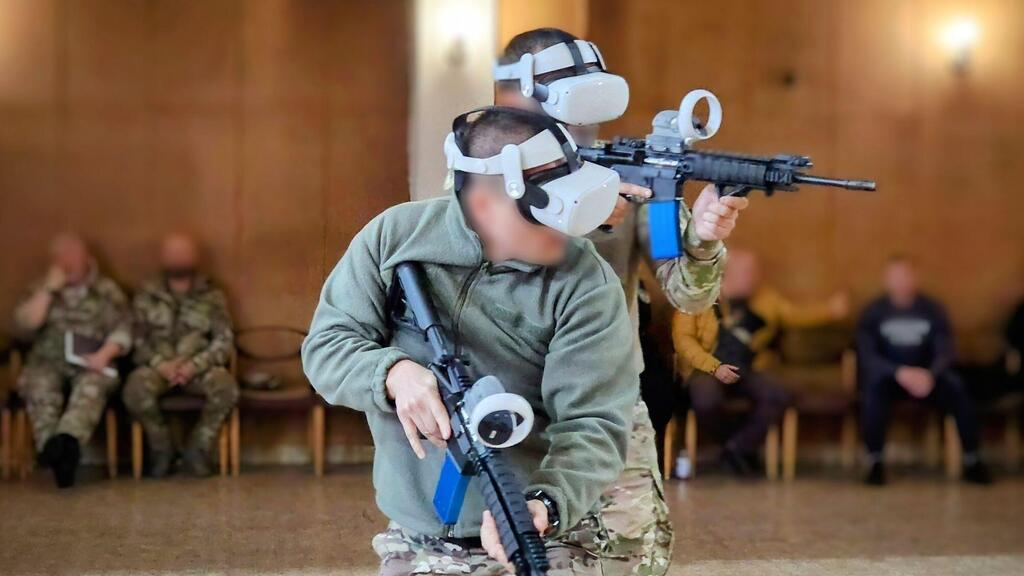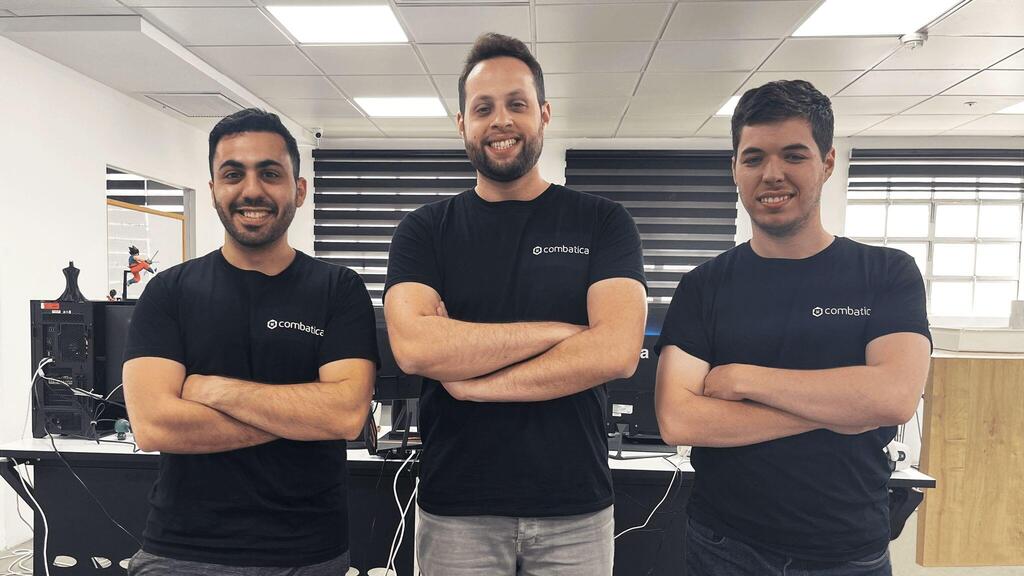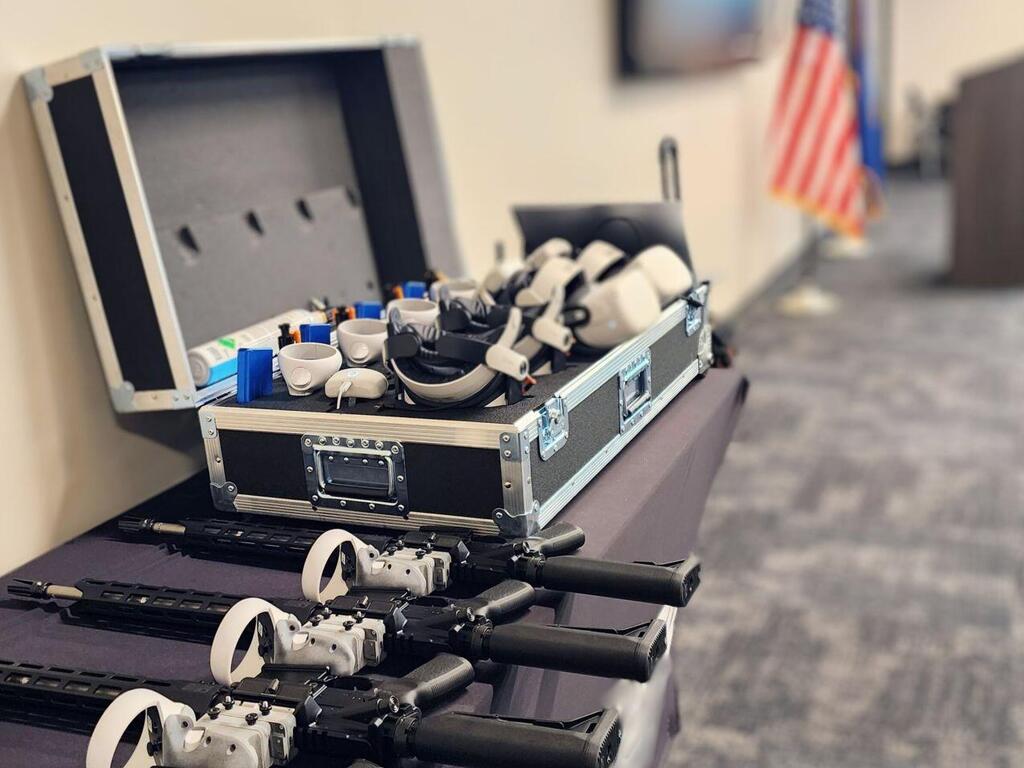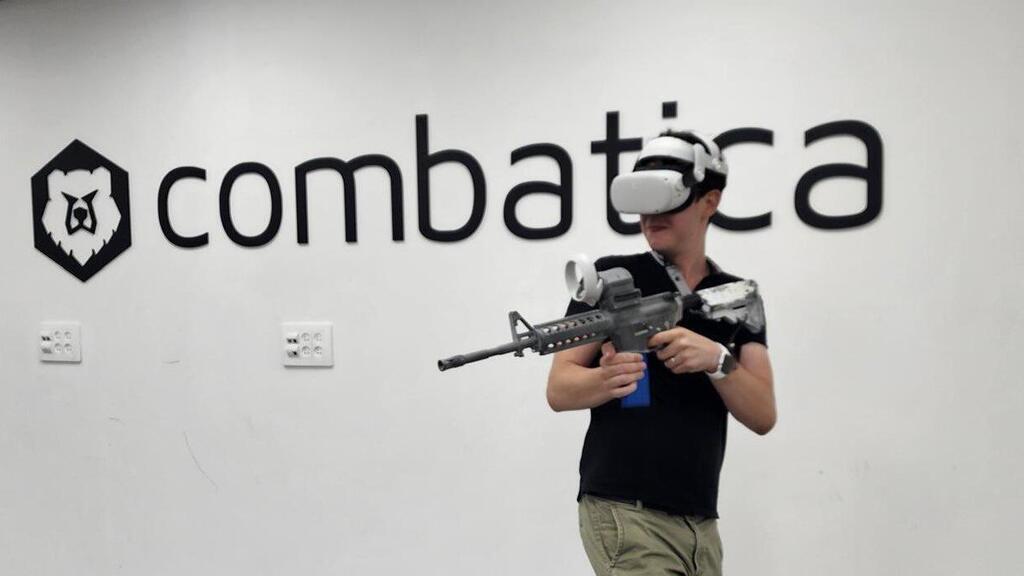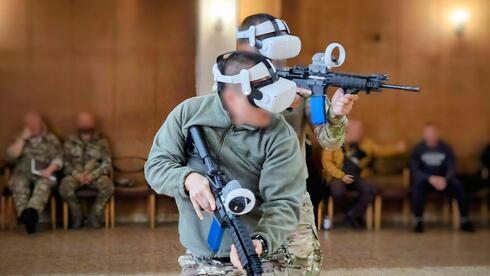
Soldiers are getting an XR boost for training on the battleground
Combatica’s next-gen XR training tool offers the best glimpse yet at how virtual reality will change our lives
Earlier this year I tried Apple’s Vision Pro for the first time. It was an extraordinary experience, albeit a bit gratuitous. As I sat in the Manhattan store watching a Pixar movie atop a Montana mountain, it attempted to show me what my future might look like. Many users were taken to it, which saw a slew of social media posts hilariously showing people walking down the street with their eyes covered and their fingers swiping in the sky.
The hype was short-lived. As months went on people stopped using them and Apple quietly halted production on the Vision Pro 2. Much like its predecessor Google Glass, it appeared the public wasn’t ready for widespread consumer use outside of gaming.
One Israeli company that has found a niche in the XR commercial market use is Combatica, which offers law enforcement, special forces, and security teams AI-based scenarios. The company focuses on training professionals in decision-making under stress and fire, using data to track friendly fire reduction and situational awareness. Its system arrives at training grounds in one large case and runs off Meta’s Quest 2 headsets with a third-party head strap and external batteries alongside M4 airsoft rifles, making setup easy and portable for those seeking its services.
“If you look at today's simulators, the idea is that law enforcement and military around the world train with mostly click screens, and the soldier or officer is standing in place and shooting at a screen. That is inherently unrealistic,” says Erel Herzog, Combatica Co-Founder and Chief Strategy Officer. “They might save some money on ammunition and be safer, but they don't increase the training effectiveness.”
Combatica offers customers immersive scenarios that test the abilities of their soldiers or officers in real-time. Data is then sent to its system which records bullets shot, target accuracy, and other ways to improve performance. Herzog confirms that the system has already helped train nearly 2,000 soldiers, including “most of the special forces units in Israel” and is deployed on four continents, including a partnership in Israel with Amarel, a subsidiary of Rafael.
Unfortunately, the company remains scant on details relating to funding and customer bases, confirming only that its system has helped “quite a few NATO countries” and has raised “a sizable amount from a few notable investors.” It also does not share how much the products cost.
Today, headsets like Meta Quest are used widely for gaming and remain surprisingly popular; 20 million units have been sold and serve as proof that Vision Pro alternatives are possible. Herzog admits that the Combatica co-founders (Herzog with CEO Yair Rothenberg and CTO Itay Beresi) are somewhat interested in gaming with a background in game development, with Rothenberg calling the Combatica system “always looking to the best game out there.” They had co-founded a unit in the IDF called FutureLabs training soldiers with technology, but today they have taken the project to the private sector.
I had been invited to its offices in Petah Tikva to experiment with the system and see how it compared with other XR devices on the market. In an open 40 square meter ‘pitch’, I placed the Quest on my head and was handed an airsoft rifle. I was immediately transported into a DOOM-like setting, where I played a one-on-one shooting game with another person who was also wearing the gear. We could hide behind walls, point our guns, and shoot each other from behind virtual brick walls.
Whereas the Vision Pro was an impressive piece of technology, I wouldn’t rush to walk around with it on my face. The device is heavy and cabled, immersive but somewhat disorientating. Here, Combatica’s Quest technology and AI scenarios are the complete opposite: the light headpiece is barely noticeable and I felt no problems running, ducking, and navigating the artificial environment. It felt like I was inside the computer games I used to play or as if I had upgraded from the laser tag playgrounds I used to visit as a child.
There is nothing like it. And I’m not the only one to think so. According to testimonials on the company site, a member of the Israeli Security Forces called it “truly remarkable” and an IDF Ground Forces soldier declared: “I’ve been in real terrorist attacks. This is just like the real thing.” Well, I can’t speak for that but I can attest that it was the closest I could imagine being in a real-life combat situation would be.
The next scene took the experience a step further. I was warned by the operator that the upcoming AI scenario had caused some participants anxiety, canceling the simulation halfway through. I affirmed that I was good to go and prepared to be the leader in the next exercise. I was transported to my next location and found myself walking through a building corridor. On either side of me were open classroom doors.
It was a school shooting scenario.
This time, I was charged with locating a digital shooter in one of the rooms. I dipped and ducked through the school and found myself head-on with the shooter. In several shots I managed to ‘neutralize the threat’ but not without suffering from injuries of my own, signaled by red throbbing blood appearing in my peripheral vision.
According to data provided by Combatica, I had fired 43 shots with a 23% accuracy - far, far below the average rate of 50-70% seen among professionals who use the system. The company has several pre-designed scenarios it offers to its customers, but it will also offer the ability for agencies to design their own needs so instructors can in real-time decide where and when to send the enemies for the participant.
“We've already had situations where we built a certain location for a certain customer, and a few months later, we see on the news that something happened at that location and the customer was successful in defending it. This is making a real difference in the real world,” said Herzog.
Today XR platforms are typically reserved for gaming in the commercial sector, with Meta’s track record showing signs of a strong boom. But other examples from Google and Apple have so far failed to capture the public’s imagination. Companies like Combatica are showing how modern-day use cases for virtual play can make a profound impact on the future of real life.
First published: 12:47, 05.08.24









